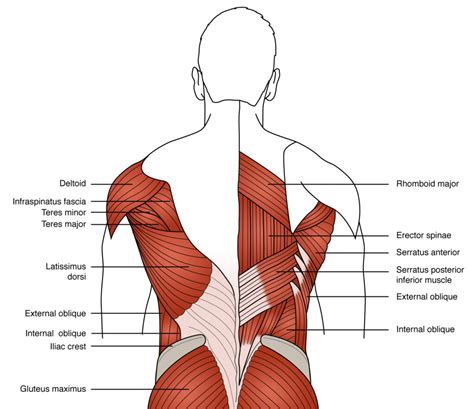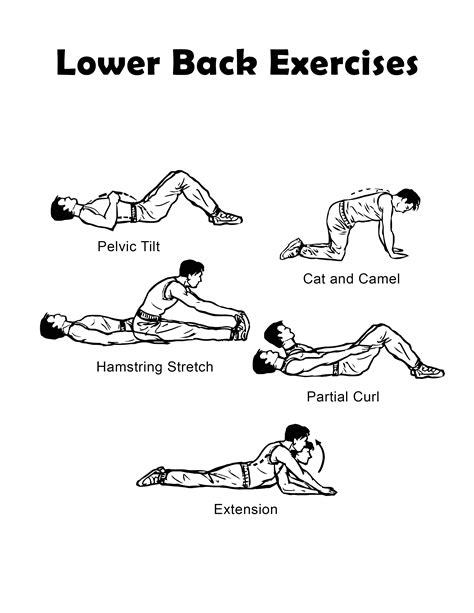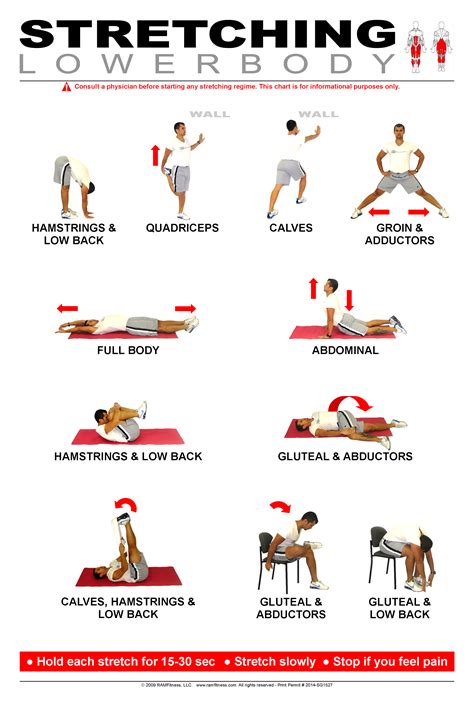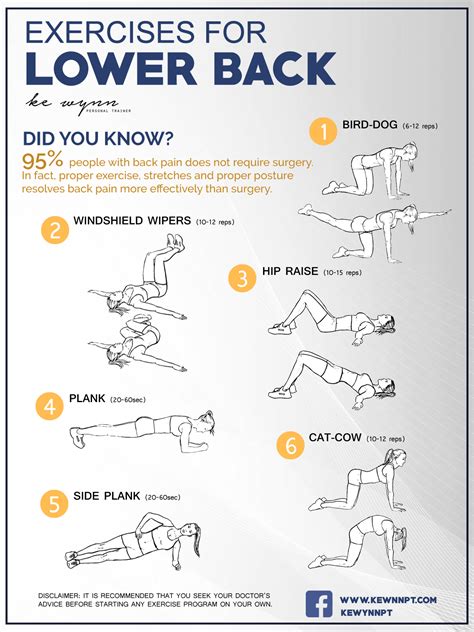Intro
Relieve lower back pain with targeted exercises, stretches, and strengthening techniques, promoting spinal stability, core engagement, and flexibility to alleviate discomfort and improve posture, ensuring long-term lower back relief and overall wellness.
Lower back pain is a common issue that affects millions of people worldwide, causing discomfort, limiting mobility, and affecting overall quality of life. Engaging in regular lower back exercises can provide significant relief, improve flexibility, and strengthen the muscles that support the spine. In this article, we will delve into the importance of exercising for lower back pain relief, discuss the benefits of various exercises, and provide a comprehensive guide on how to get started.
Lower back pain can be caused by a variety of factors, including poor posture, muscle strain, herniated discs, and degenerative conditions such as osteoarthritis. While medication and rest can provide temporary relief, a long-term solution often involves a combination of exercises, stretches, and lifestyle modifications. Regular exercise can help alleviate lower back pain by strengthening the core muscles, improving flexibility, and enhancing posture. Additionally, exercise can help reduce stress and anxiety, which are common contributors to lower back pain.
The benefits of lower back exercises extend beyond pain relief, as they can also improve overall physical function, enhance athletic performance, and reduce the risk of injury. A well-structured exercise program can help individuals with lower back pain to regain control over their bodies, improve their mood, and enhance their overall sense of well-being. Whether you are experiencing chronic lower back pain or seeking to prevent future episodes, incorporating lower back exercises into your daily routine can have a significant impact on your quality of life.
Understanding Lower Back Anatomy

Key Muscles Involved in Lower Back Pain
The muscles involved in lower back pain include: * Latissimus dorsi * Trapezius * Rhomboids * Erector spinae * Abdominals * Gluteals These muscles work together to provide stability, flexibility, and movement to the lumbar spine. Weakness or imbalances in these muscles can contribute to lower back pain, making it essential to incorporate exercises that target these muscle groups.Benefits of Lower Back Exercises

Types of Lower Back Exercises
There are several types of lower back exercises that can provide relief from lower back pain, including: * Stretching exercises, such as hamstring and hip flexor stretches * Strengthening exercises, such as planks and bridges * Aerobic exercises, such as walking and swimming * Flexibility exercises, such as yoga and Pilates * Core exercises, such as pelvic tilts and bird dogLower Back Stretching Exercises

Lower Back Strengthening Exercises
Lower back strengthening exercises are critical for providing support and stability to the spine. Some effective strengthening exercises for the lower back include: * Plank: Start in a push-up position, engaging your core muscles and holding for 30-60 seconds * Bridge: Lie on your back with your knees bent and feet flat on the floor, lifting your hips towards the ceiling and holding for 30-60 seconds * Bird dog: Start on your hands and knees, lifting your right arm and left leg off the ground and holding for 30-60 seconds, repeating on the other side * Pelvic tilt: Lie on your back with your knees bent and feet flat on the floor, tilting your pelvis upwards and then back down again, repeating for 10-15 repetitionsLower Back Aerobic Exercises

Lower Back Flexibility Exercises
Lower back flexibility exercises are essential for improving range of motion and reducing stiffness. Some effective flexibility exercises for the lower back include: * Yoga: A low-impact exercise that can help improve flexibility, balance, and strength, while also reducing stress and anxiety * Pilates: A low-impact exercise that can help improve flexibility, balance, and strength, while also reducing stress and anxiety * Tai chi: A low-impact exercise that can help improve flexibility, balance, and strength, while also reducing stress and anxietyCreating a Lower Back Exercise Program

Tips for Sticking to a Lower Back Exercise Program
Here are some tips for sticking to a lower back exercise program: * Find a workout buddy: Finding a workout buddy can help you stay motivated and accountable, while also providing a sense of camaraderie and support. * Track your progress: Tracking your progress can help you stay motivated and focused, while also providing a sense of accomplishment and pride. * Reward yourself: Rewarding yourself for reaching milestones or achieving goals can help you stay motivated and encouraged, while also providing a sense of satisfaction and fulfillment. * Stay consistent: Staying consistent is critical for achieving long-term success and reducing the risk of injury or burnout.What are the most common causes of lower back pain?
+Lower back pain can be caused by a variety of factors, including poor posture, muscle strain, herniated discs, and degenerative conditions such as osteoarthritis.
How often should I exercise to relieve lower back pain?
+It is recommended to exercise at least 2-3 times per week, with a minimum of 30 minutes per session, to relieve lower back pain and improve overall physical function.
What are the best exercises for relieving lower back pain?
+The best exercises for relieving lower back pain include stretching exercises, strengthening exercises, aerobic exercises, and flexibility exercises, such as yoga and Pilates.
We hope this article has provided you with a comprehensive guide to lower back exercises and relief. Remember to always consult with a healthcare professional before starting any new exercise program, and to listen to your body and rest when needed. By incorporating lower back exercises into your daily routine, you can improve your overall physical function, reduce the risk of injury, and enhance your overall quality of life. If you have any questions or comments, please don't hesitate to reach out. Share this article with a friend or family member who may be experiencing lower back pain, and let's work together to create a healthier and happier community.
